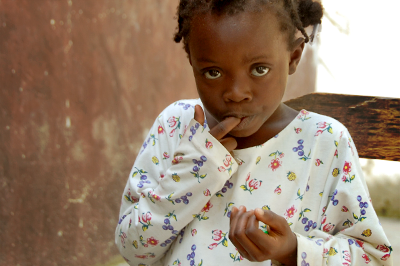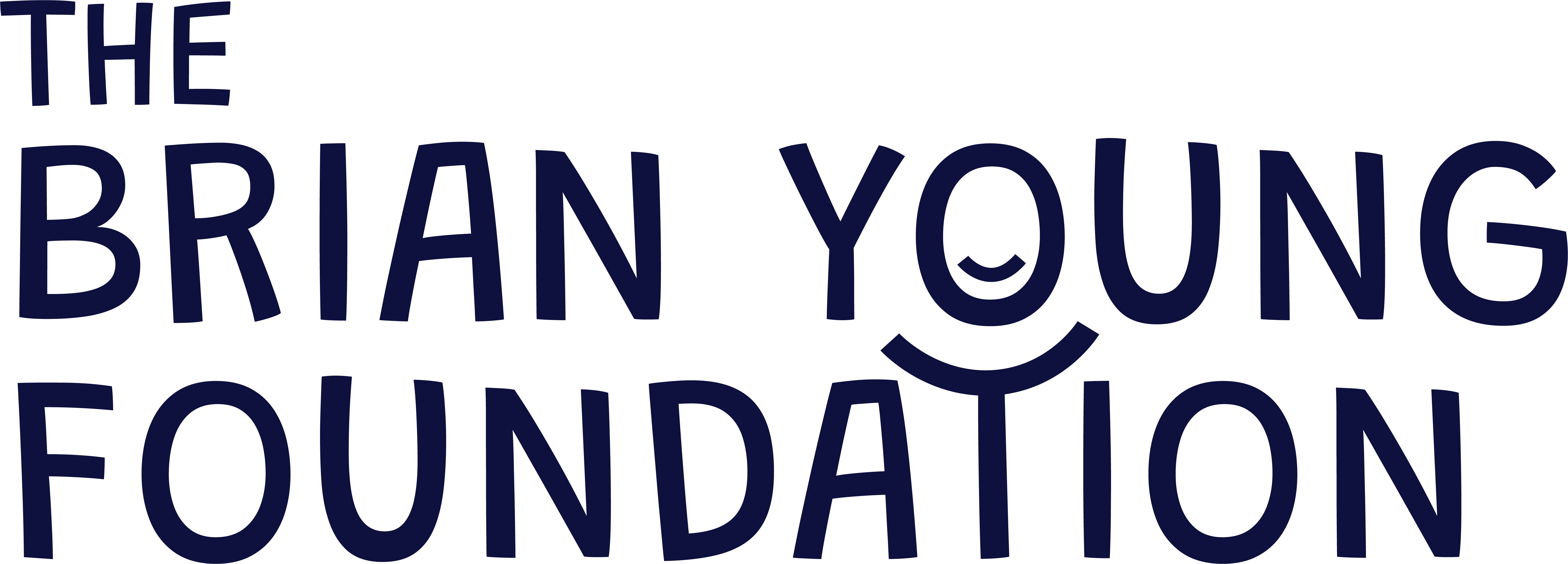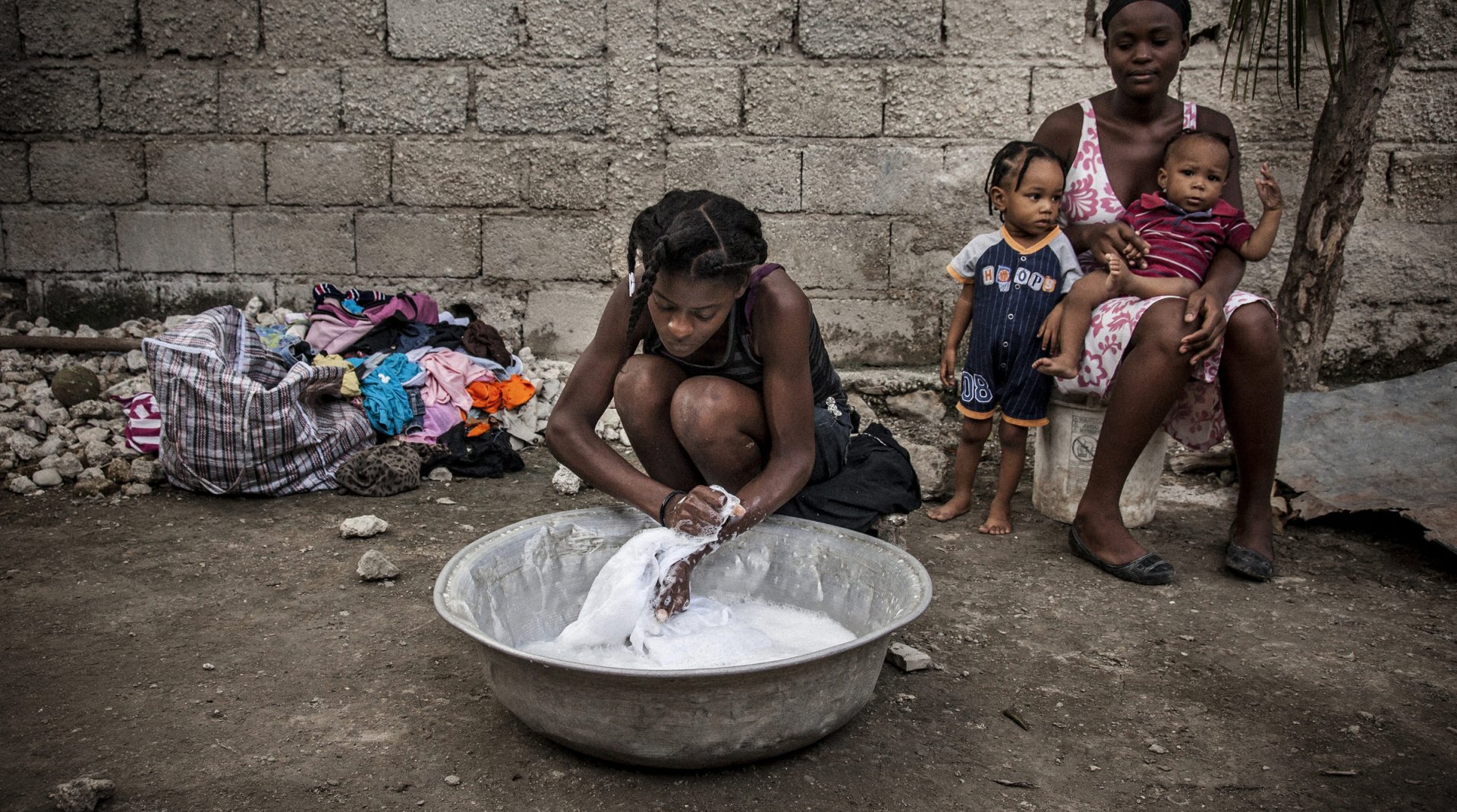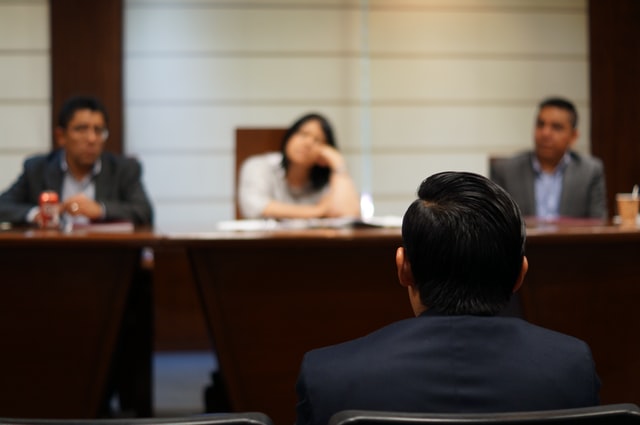If you make a point to stay informed of global news, you must be aware of the many tragic situations Haiti has faced in the past decade. You are aware of the catastrophic earthquake of 2010 and the cholera epidemic that quickly followed. If you are familiar with our foundation, you know the damage inflicted by Hurricane Matthew and the resulting food shortages that plagued the island. In a nation that already struggles to provide its citizens with a safe environment, the numerous repercussions of these natural disasters have been devastating. But the most tragic consequence of all is the child forced labor crisis that has manifested from these conditions.
Coerced child enslavement is estimated to impact 4.3 million children worldwide. In Haiti, the numbers are shocking. Experts believe that as many as 500,000 children live as ‘restavèks’ or child slaves on the small island. Haitian children end up as restavèks in many ways, but the dark reality is that most are voluntarily given up by their families. The dire living conditions in Haiti’s most impoverished areas make providing children with a safe, bountiful life extremely difficult. Rural citizens face a higher risk of diseases born from poor sanitation. Restricted food supply makes malnourishment a common occurrence in youth. On the streets, young children are subject to violence and crime. The government in Haiti has been notoriously unequal in providing child welfare resources to the most vulnerable communities on the island. With poor infrastructure and funding, they rarely have consistent access to schools.
Families struggling in these economically disadvantaged areas are generally approached by an intermediary source, seemingly seeking to hire children for extra help with daily tasks. These people are sent by wealthier Haitian families from other parts of the island. In exchange for their services, the mothers are promised their children will be provided a better life– with adequate food, clean water, and access to education. When a child is given an education, they increase their chances of breaking out of poverty tremendously. The simple act of going to school is a highly coveted privilege and opportunity for many Haitian children. Faced with these dilemmas, these women decide to voluntarily send their children to more affluent households in hopes of finally breaking the cycle.
While the intentions of these recruiters seem sincere at first, they quickly turn exploitive. They inquire about teenaged children first but then enlist kids as young as toddlers. Rather than being cared for, these children perform labor-intensive domestic tasks for the wealthier families that hire them. They are forced to fetch clean water, wash laundry, cook meals, and care for other children. Since these jobs are mostly considered women’s work, the majority of restavèks are girls. These children suffer abuse and neglect as restavèks. Instead of bettering their situation, the children are treated violently at the hands of the families that promised to protect and provide for them. At times they are trafficked as slaves, often exchanging hands between handlers and families without their consent.
Understanding Haiti’s History
From a privileged, Western-World perspective, it can be troubling to understand how something so devastating could become such a widespread occurrence. Centuries of exposure to slavery and coercion have entrenched the harmful tactics into the nation’s society, ultimately becoming culturally accepted. The sad reality is rooted in extreme poverty and the disproportionate psychological effects it has on women. As primary caretakers, women are subjected to desperate cycles of gender-based violence and economic entrapment. Their cries are often dismissed, as they hold no political power on the island. With little at their defense and minimal representation in government, the women and children of Haiti suffer the most.
The toxic culture of restavèk both stems from and echoes the history of a country once enslaved itself, by the French. Eventually, slaves out populated their French colonizers on the island and rebelled to gain independence as a country in 1781. The new nation’s founders agreed on the name ‘Haiti’ to pay homage to the Taino population that preceded them, honoring its survivors.
But the French did not let Haiti go easy. In return for diplomatic recognition and immunity from French attacks, they ordered Haiti to pay 150 million Francs in reparations. That amount is estimated to be worth over $20 billion US dollars today, far more than the island’s budding economy could produce. As a result, Haiti was forced to take risky loans from international banks. Since their independence, they have been grappling to build a prosperous, efficient economic foundation on the island. The outstanding debt to France was not officially paid off until 1947, more than 150 years later. Accomplishing the feat has fundamentally bankrupted the country, leaving them infiltrated by corruption and exploitation.
Out of the deficit, social welfare services have suffered the most. Haiti’s severely underfunded infrastructure and healthcare systems have perpetuated inequality and poverty. At this point in time, Haiti remains the poorest country in the Western hemisphere. With 6 million of its citizens living below the poverty line, 2.5 million of those are living in extreme poverty. Over the decades, Haiti has received international aid from the United Nations and non-government organizations (NGOs). While the world’s donations have been generous, government interference has hindered their impact in the past. The unstable government state affords little trust from the nation’s citizens. With so many promises broken, the Haitian people are left with a sense of abandonment and dismantled expectations.
Efforts and Ways to Help
While it will take time to free all victims of the restavèk crisis, it is not impossible. Social changes need to be implemented directly towards the conditions that allow this horrible system to perpetuate. The first step towards any goal is spreading awareness and clearing harmful misconceptions. Education is a core factor in this process because it illuminates the full spectrum of the crisis. When the world begins to see how extreme inequality affects children, they can realize this as a human rights issue, not a Haitian issue.

Organizations like Beyond Borders are working to educate the citizens of Haiti about the intricacies of the situation. They offer training courses on children’s rights, organize survivor networks, and assemble Child Protection Brigades that act as a defense task force for vulnerable children. In 2016, the group formed an alliance with Free the Slaves, another humanitarian organization with the same mission of ending child domestic servitude. Together they have traveled across the island, encouraging proper reform and spreading strategies to reduce the prevalence of the restavèk system. They also work alongside local authorities and businesses to build sustainable economic growth opportunities in vulnerable communities.
Much like our own, other foundations were initially drawn to Haiti after a natural disaster but quickly witnessed the situation at hand. Restavèk Freedom is a nonprofit organization from Ohio that seeks out restavèk victims, speaks with the families that host them, and convinces them to provide more rights. A caseworker visits the children weekly to ensure these children have access to education, have all their basic needs fulfilled, and are not being abused. They also provide them with tuition, uniforms, and school supplies. Restavèk Freedom now has an educational platform that reaches over 2 million people, addressing crucial yet taboo topics like gender based-violence, inequality, and family planning.
The Goal of the Brian Young Foundation

Long-term, impactful change is achievable through consistent efforts like those of the groups mentioned above, among others. At the Brian Young Foundation, we strive to be a catalyst to that change by supporting Haiti’s numerous orphanages. We work alongside these amazing people to ensure these children have healthy living conditions and educational opportunities. Above our work on the island, we are committed to raising awareness of the restavèk crisis by enabling and empowering survivors to share their experiences.
If you feel pulled to assist in our mission, please do not hesitate to reach out to one of our team members. You can visit our website for more information on the neglected children of Haiti and how you can help.



